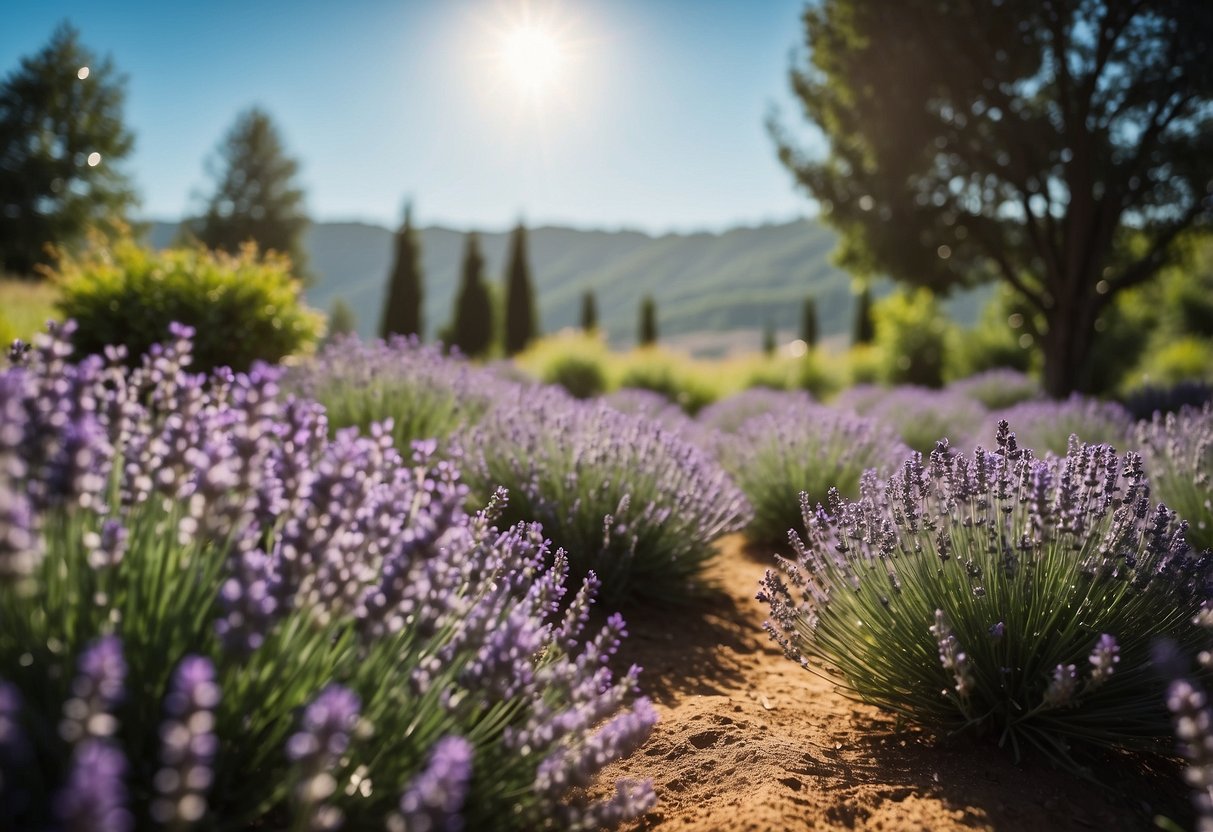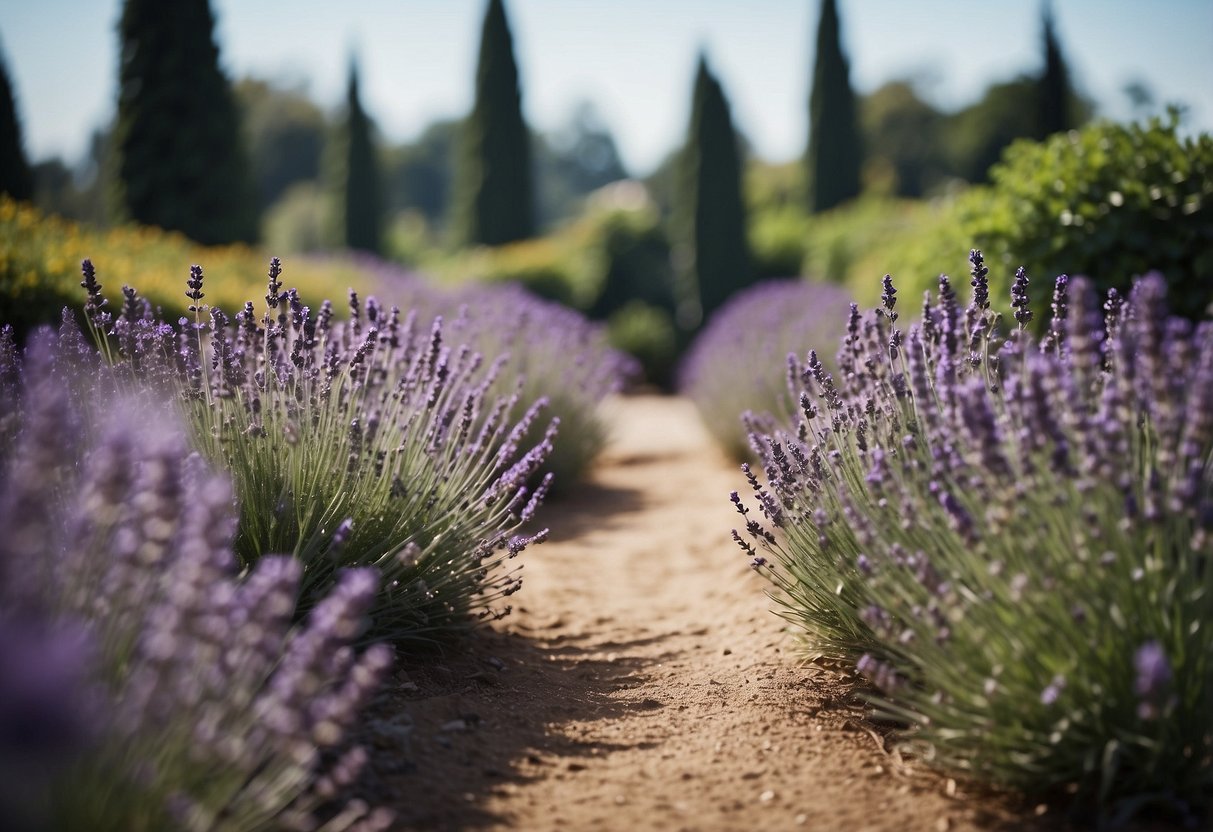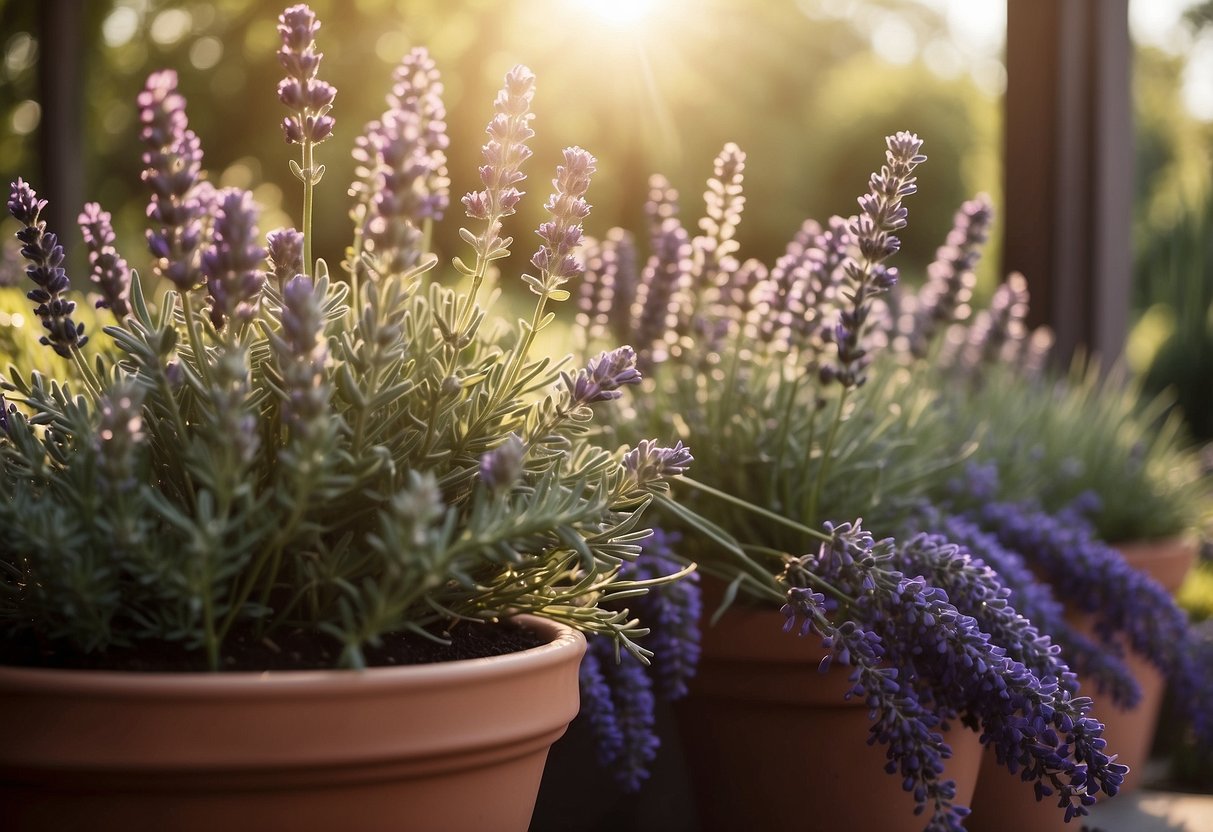Lavender Garden Ideas: Beautiful Inspiration for Your Yard
Lavender gardens are a beautiful addition to any landscape. Known for their vibrant purple flowers and calming scent, lavender plants can transform your outdoor space into a peaceful retreat. Whether you have a large yard or a small balcony, there are many ways to incorporate lavender into your garden design.

Are you looking to create a soothing and colorful garden with minimal effort? Lavender is easy to care for and can thrive in various settings, making it a great choice for both beginners and experienced gardeners. With a range of options available, you’ll find the perfect lavender garden idea to suit your space and preferences.
1) Lavender Pathways

You can create a beautiful and fragrant walkway by planting lavender along the edges of your paths. The purple flowers add a pop of color and make your garden look elegant.
As you walk by, the scent of lavender will fill the air, providing a calming experience. Lavender pathways are not just pretty; they are practical, too, as lavender is low-maintenance.
If you want to explore more about this idea, check out lavender edging along pathways. Give it a try and transform your garden paths into something truly special!
2) Rustic Lavender Archway

A rustic lavender archway can add charm and fragrance to your garden. Use wooden beams or an old metal frame for a natural look.
Plant lavender at the base and let it grow over the structure. This creates a stunning, scented entrance that invites visitors into your garden.
For inspiration, explore various design ideas to find the perfect fit for your garden.
3) Lavender Hedge

A lavender hedge adds both beauty and fragrance to your garden. It serves as a lovely border, making your garden look neat and attractive.
Planting is simple. Choose a spot with plenty of sunlight and well-draining soil. English lavender is a popular choice for hedges.
Lavender hedges attract bees and butterflies and can help repel mosquitoes. They are also low-maintenance once established. They even thrive near the sea and in rocky soil.
4) Lavender Rock Garden

A lavender rock garden is a stunning way to combine the rustic beauty of rocks with the vibrant color and fragrance of lavender.
You can plant lavender around large rocks to create natural borders. This works well for hillside gardens or sloped areas.
Mix in other perennials like creeping thyme to add more texture and color. For more ideas, check out these lavender rock garden inspirations.
5) Lavender and Rose Border

Creating a lavender and rose border adds a touch of elegance to any garden. Both plants are beautiful and complement each other well.
Lavender’s purple hues and the vibrant colors of roses create a striking contrast. Planting lavender and roses together also promotes natural pest control, as lavender attracts beneficial insects.
Make sure to plant lavender and roses at least 2-3 feet apart. This spacing ensures both plants get enough airflow, light, and nutrients. Lavender prefers well-drained soil, so consider adjusting the soil conditions to match its requirements.
Explore more about growing lavender with roses.
6) Lavender Planters on Patio

Add a touch of beauty and scent to your patio with lavender planters. It’s a simple way to make your outdoor space more relaxing.
Place the planters near seating areas to enjoy the fragrance while you sit. Use different sizes of pots to create visual interest.
If you don’t have a lot of space, small planters can fit easily on tables or shelves. This is perfect for balconies or small patios. Lavender grows well in containers, making it an excellent choice for patio gardens.
7) Lavender Herb Spiral

Creating a lavender herb spiral is a wonderful way to maximize space and design a beautiful garden feature. Start by choosing a sunny spot, since lavender loves lots of sunlight.
Use repurposed materials such as old bricks or stones to build the spiral. Begin at the center and work your way out, creating tiers that rise to a height of about one meter.
Fill the spiral with well-draining soil and plant lavender at different levels. This helps ensure good air circulation and easy access to all your herbs. Your garden will smell amazing and look stunning with this creative design!
8) French Lavender Cafe Corner

Create a charming spot in your garden by growing French lavender around a cozy seating area. Choose comfortable chairs and a small table for your café corner.
The soothing scent and vibrant purple blooms will make it a delightful place for morning coffee or afternoon tea. Use rustic pots or planters to add to the cozy feel of the space.
French lavender, like Lavandula dentata, thrives in well-drained soil and full sun. It’s perfect for creating a relaxed, picturesque corner where you can unwind.
9) Lavender Water Feature

Imagine hearing the gentle sound of water mixed with the sweet scent of lavender.
You can create this serene environment by adding a small water feature surrounded by lavender plants.
Lavender thrives near water, making it a perfect companion to your fountain or pond. It adds a touch of elegance and calm to your garden.
Place some stones around the water feature and let the lavender grow naturally for a beautiful, relaxed look.
10) Lavender and Succulent Mix

Combining lavender and succulents in your garden creates a stunning display. Both plants thrive in sunny spots and well-drained soil, making them great companions.
Lavender’s tall purple blooms contrast beautifully with the various shapes and colors of succulents. You can plant various types of succulents around lavender to create an interesting and low-maintenance garden.
Adding a mix of lavender and succulents along pathways or borders can add texture and color. The combination is perfect for creating visual interest while requiring minimal watering and upkeep.
Best Practices for Designing a Lavender Garden

When designing a lavender garden, it’s important to choose the right varieties for your space and prepare the soil properly. Here are some key tips to help you get started.
Choosing the Right Lavender Varieties
Selecting the right type of lavender is crucial. There are many varieties, but English, French, and Spanish lavender are popular choices. English lavender is hardy and great for colder climates. French lavender is more suited for warmer, dry regions and has a long blooming season.
Spanish lavender is distinct with its small size and unique flower shape. Consider how much space you have and the climate in your area. If you live in a cooler region, go with English lavender. If your area is warmer or has dry conditions, French or Spanish lavender will thrive better.
Soil Preparation Tips
Lavender needs well-draining soil to thrive. Start by testing your soil’s pH; lavender prefers a pH between 6.5 and 7.5. If the soil is too acidic, add some lime to balance it out. Ensure the soil is sandy or loamy, as these types drain well.
You can add organic matter like compost to improve soil texture if needed. Also, consider raised beds or mounds if your garden soil is heavy or clay-like. This will prevent waterlogging, which lavender doesn’t tolerate. Mulching with gravel or small stones can help maintain good drainage around the plants.
Remember, properly preparing your soil and choosing the right lavender varieties will set your garden up for success.
Maintaining a Healthy Lavender Garden

For a thriving lavender garden, you must focus on proper watering, fertilization, and pruning. Effective care ensures long-term health and abundant blooms.
Watering and Fertilization
Lavender plants need proper watering to avoid root rot. Water deeply but infrequently, usually once a week. Ensure the soil is dry before the next watering. During hot, dry periods, you may need to water more often.
Opt for sandy or gritty soil with good drainage. Lavender prefers soil with a neutral pH around 7. Over-fertilization can harm the plant. Use a balanced, slow-release fertilizer once in spring. Mulch with small gravel or coarse sand to improve drainage and reduce weed growth.
Pruning and Harvesting Tips
Pruning keeps your lavender plants healthy and encourages new growth. Prune in late summer or early fall after the flowers have faded. Trim about one-third of the plant, but avoid cutting into old wood.
Harvest lavender when the flowers just start to open. Cut the stems early in the day after the dew has dried. Hang them in small bunches, upside down, in a dark, well-ventilated area to dry. Proper pruning and harvesting ensure your lavender remains vigorous and productive.
Aesthetic Enhancements for Your Lavender Garden

Creating a beautiful lavender garden can be both satisfying and enjoyable. To take your garden to the next level, consider incorporating complementary plants and using decorative elements. These enhancements can make your garden not only lovely but also more visually appealing and relaxing.
Incorporating Complementary Plants
To create a visually stunning lavender garden, mix lavender with other plants that enhance its beauty. One option is underplanting lavender with trees or shrubs, creating a layered look. Lavender can also be paired with rosemary, sage, or thyme. These Mediterranean herbs thrive in similar conditions and add a variety of textures and scents to your garden.
Pairing lavender with roses or peonies can add bursts of color. These flowers contrast beautifully with the purple hues of lavender. Another idea is planting succulents nearby. Their simple, fleshy leaves offer a clean background that makes the lavender’s blooms stand out. Grouping lavender in masses or blocks with other plants also creates an impactful visual display.
Using Decorative Elements
Adding decorative elements can elevate your lavender garden’s charm. Consider using garden statues or birdbaths as focal points. These items offer a place for the eye to rest and add character to the space. Garden paths made of stone or gravel lead visitors through your garden, making it easy to enjoy its beauty up close.
Incorporate elements like wrought-iron benches or wooden arbors to create inviting spots to sit and relax. Decorative pots and containers with lavender can also add variety and interest. Placing ornamental fencing around sections of your garden helps define spaces and gives structure to the overall design. Using a stone garden wall can highlight the natural setting, adding an old-world charm to your garden.
By blending complementary plants and thoughtful decorative elements, your lavender garden can become a breathtaking sanctuary.







